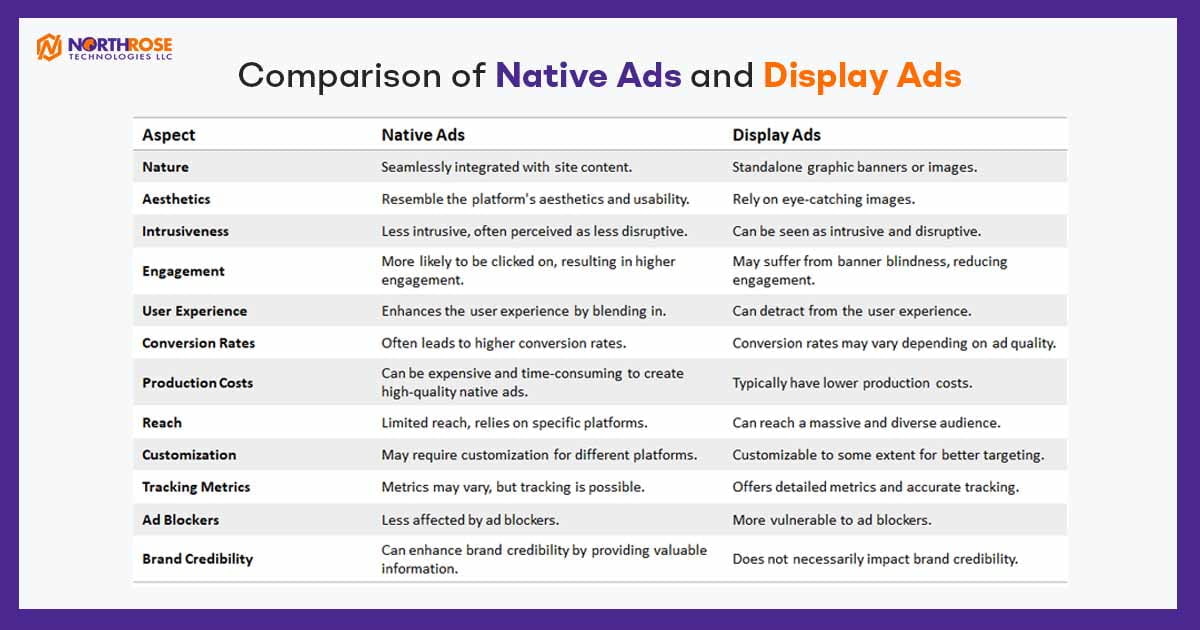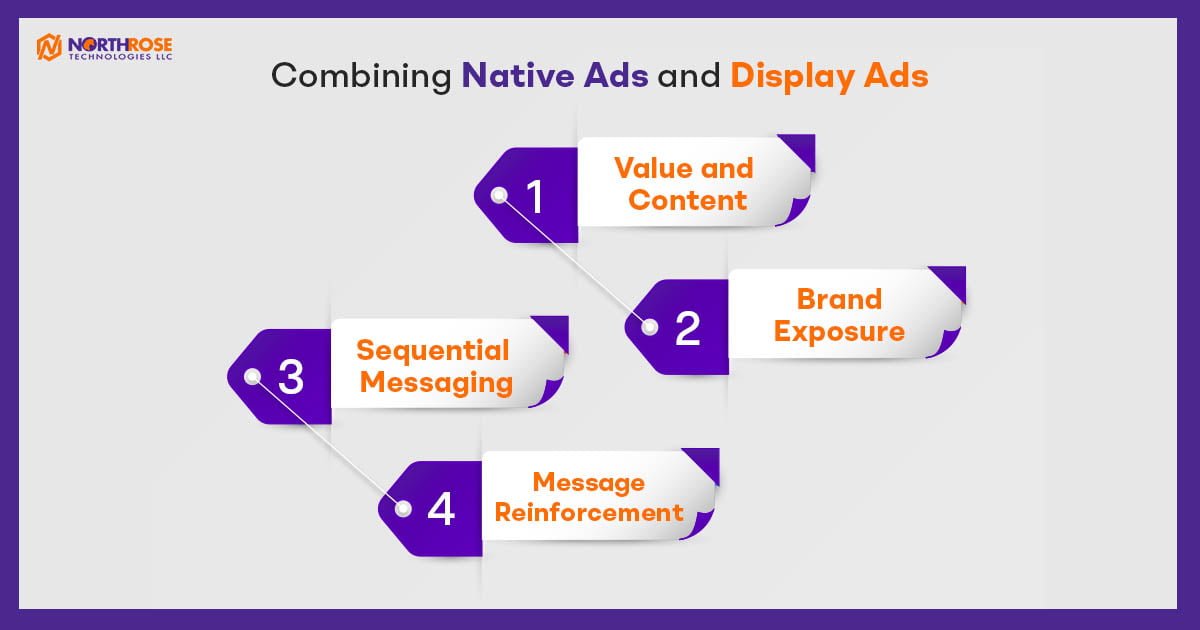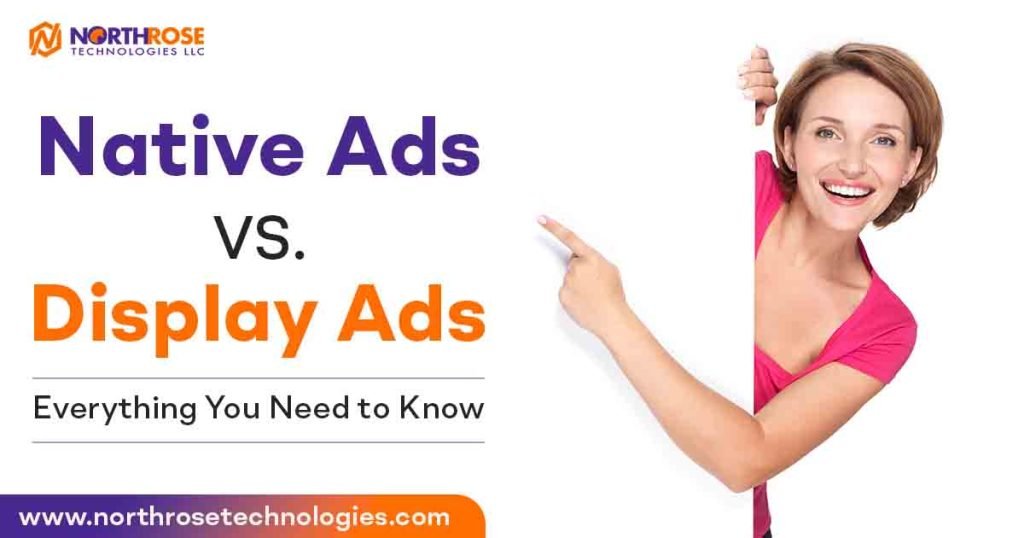Native advertisements and display ads continue to fight it out in the fast-paced world of digital marketing.
Both native and display advertising have been around for a while, but because of the development of artificial intelligence and the effective targeting options it offers, they are now more widely used than ever.
Given their effectiveness in promoting goods and raising brand awareness, display and native ads are in high demand.
Native advertising is now a typical channel in media strategies, having previously been a brand-new advertising technique. While the majority of marketers have embraced the idea of native advertising, relatively few truly recognize it as a trustworthy method for spreading your brand’s message online.
Understanding Native Ads
The ad content in native advertising is a type of sponsored media that melds smoothly with the other material on the site it is placed on.
Native advertising resembles the aesthetics and usability of the platform on which they are displayed, giving the impression that they are less intrusive than other ad forms. This results in seamless integration.
These advertisements frequently provide content that is in line with the interests and preferences of users, making them incredibly relevant.
Since they don’t interfere with the user experience, native advertisements also tend to be more engaging.
Advantages of Native Ads
- Native ads are more likely to be clicked on and interacted with given their less intrusive nature. This leads to higher engagement.
- As native ads blend in seamlessly, they don’t disrupt the user’s journey, resulting in a more positive user experience.
- They often lead to higher conversion rates as native ads are perceived as content that is helpful and relevant rather than blatant advertisements.
- When done right, native ads can enhance a brand’s credibility by providing valuable information to the audience.
Drawbacks of Native Ads
- Creating high-quality native ads that fit well into various platforms can be expensive and time-consuming.
- Native ads tend to have a limited reach and might not reach as broad an audience since they rely on very specific platforms.
- Furthermore, native ads can be difficult to scale across multiple platforms as they need customization.
What are Display Ads?
Display advertising involves designing captivating banners or graphic adverts that are often shown on websites or mobile applications.
They largely rely on eye-catching images to attract people’s attention. These advertisements can be seen on a variety of websites and apps, which enables them to reach a sizable audience.
Additionally, display adverts can be created in a variety of conventional sizes, simplifying the creation process.
Advantages of Display Ads
- Display ads can reach a massive audience, which makes them a suitable strategy for enhancing brand awareness.
- These ads often have lower production costs compared to native ads, making them budget-friendly.
- Display ads offer detailed metrics and tracking, allowing marketers to measure their campaign’s performance accurately and make any changes accordingly.
- While they have standardized sizes, display ads can still be customized to a certain extent for better targeting.
Drawbacks of Display Ads
- Given its overuse, many users have developed banner blindness where they ignore display ads altogether.
- The rise of ad blockers has made it even more challenging to reach the right users with display ads.
- Display ads are often seen as intrusive and disruptive to the user experience.
Comparing Performance Metrics
To make an informed decision between native and display ads, it’s crucial to understand the key performance metrics associated with each format.

For both native and display ads, the Click-Through Rate (CTR) helps measure the percentage of users who clicked on the native ad.
Additionally, engagement rates help track user interactions with native ads, such as likes, shares, and comments. This leads to user-generated content. You can also measure the percentage of users who took the desired action after interacting with your native ad.
For display ads, one can rely on impressions as they indicate how many times the ad was displayed, offering insight into its reach. The viewability of a display ad allows you to measure the percentage of the ad that was visible to users, helping assess its effectiveness.
When to Use Native Ads
1) Content Marketing
Native ads are great for content marketing campaigns as they seamlessly blend with editorial content. This provides value to users while promoting a product or service.
2) Social Media Advertising
Platforms like Facebook, Instagram, and X (previously Twitter) offer native advertising options that fit well with the organic content that users expect.
3) Sponsored Content
Native ads work exceptionally well when sponsoring content on news websites, blogs, or other platforms. This leads to enhanced brand visibility.
When to Use Display Ads
1) Brand Awareness Campaigns
Display advertising is a fantastic option if your main objective is to boost brand visibility and recognition given their wide reach and visual appeal.
2) Remarketing Campaigns
Display ads are extremely effective in re-targeting users who have previously interacted with your website, encouraging them to return and convert.
3) Product Launches
When launching a new product or service, display ads can generate excitement and engagement with visually compelling visuals.
Combining Native and Display Ads
Although native and display ads have advantages and disadvantages, they are not incompatible. In actuality, combining the two styles is an extremely effective tactic.

- By using native ads to provide valuable content and display ads for broader brand exposure, you can create a synergy that leverages the strengths of both.
- You can use native ads to introduce your brand or product subtly, followed by display ads to reinforce the message to a broader audience.
Future Trends
The world of digital advertising is constantly evolving. To stay ahead of the curve, marketers should keep an eye on emerging trends.
1) AI-Powered Personalization
Artificial intelligence will surely play a significant role in personalizing both native and display ads, ensuring they reach the right audience at the right time.
2) Interactive Ads
Interactive display ads, such as gamified experiences, will become more prevalent, increasing user engagement.
Both display ads and native ads have unique benefits and uses. Your campaign goals, target demographic, and budget should determine which strategy you choose. In this cutthroat digital era, marketers can maximize the impact of their advertising efforts by remaining adaptable, running ongoing tests, and embracing evolving trends.
North Rose Technologies understands the nuances of native and display ads. Reach out to develop a custom plan that fits your marketing strategy seamlessly.




